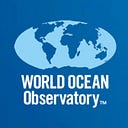Valuing Cultural Resources
Connecting us all for generations to come
This summer we are revisiting some of our favorite posts that highlight optimism for the ocean. This week we outline the myriad ways that UNESCO World Heritage sites both on land and at sea are an essential part of a strategy to conserve and protect the ocean’s vast contributions to our scientific knowledge, and their importance for our cultural history, for protection, conservation, diversity, sustainability, survivability, and as treasured pieces of our cultural heritage, connecting us all for generations to come.
In any true visualization of value, we should not forget the contribution of culture, not just to the world economy, but also to the increase of our social and political wealth. So often, we find these things in conflict: the destruction of cultural sites, eradication of cultural histories, even degradation of religious practices and beliefs. Let me offer a few examples:
In 2005 the United Nations Educational, Scientific, and Cultural Organization (UNESCO) launched a program to establish “effective conservation of existing and potential marine areas of Outstanding Universal Value and to make sure they will be maintained and thrive for generations to come.” Fifty sites distributed across 37 countries have been recognized for their unique marine biodiversity, singular ecosystems, geological processes or incomparable beauty, with certain boundaries and protections established to guard against the pervasive forces of ocean destruction, such as unsustainable or illegal fisheries, pollution from plastic and maritime transport, invasive species, over-utilization, and the combined effects of these and more by human hand and endeavor. The sites represent a selection of the most important and significant natural habitats for in-situ conservation of oceanic biological diversity, including species known, threatened, and undiscovered. This program, these places, are one essential part of a strategy to conserve and protect the ocean’s vast contribution to our scientific knowledge.
But, also, to our culture. Beyond diversity, these places, and so many others that encompass our ocean world, contribute to the existence and survivability of coastal communities, whether small island nations or big city waterfronts, associated relationship with ocean resources that have been, and remain, key elements of the cultural identity of a world united, not separated, by the sea. If you destroy these places, you destroy these relationships, deny history, and leave behind the detritus of the psychological disconnection, failed enterprise, and worldwide community connection. If, as we so often assert here, the sea connects all things, then its corruption leaves only disruption, disappointment, and disillusion behind.
The connections lost take many forms: of maritime skills and work habits, generational continuity, language and ritual, social contact and community organization, geographical and demographic organization, and human identity and psychological meaning. Who am I? If I am an ocean person, deriving all this connection from the sea, and that is corrupted and destroyed, then I am corrupted and destroyed, along with many others, neighbors and strangers, with whom I share such engagement.
What is at stake, and what UNESCO in its way attempts to protect and conserve, is the spirit of place, of the ocean as a vibrant source of work, sustenance, and survival as a person, a community, or even a nation state. That spirit can be captured, even drawn on a map, like boundaries on land or in the ocean, a set of demarcations that can be articulated, even valued as a monetary calculation included in a larger calculation of what is real, authentic, and essential, as UNESCO would say, “for the benefit of all mankind.”
I have had a determination throughout my life to visit all the Heritage sites of this world, a privileged aspiration that I have made good on at a level success that has surprised and gratified me enormously — across Europe, the Middle East, and Asia — a focused walkabout to witness and understand the great monuments of our civilization.
This morning, I counted the marine heritage sites on the UNESCO map, and realized I had visited 7 of the 50. I sat thinking them over, remembering each place and the circumstances of each visit. What I had seen? Who I had met? What did it mean? I had “banked” each one, deposited them in my personal accounting of natural and cultural value. They were treasured pieces of ocean currency, sublime entries on the balance sheet of Nature, blue gold, pure profit, never to be squandered. How much richer am I for this wealth? Will I, will we, leave it as a lasting inheritance for our children?
PETER NEILL is founder and director of the World Ocean Observatory, a web-based place of exchange for information and educational services about the health of the world ocean. He is also host of World Ocean Radio, upon which this blog is inspired. World Ocean Radio celebrates 15 years this year, with more than 645 episodes produced to date.
Do you prefer to listen? Find us on YouTube.
